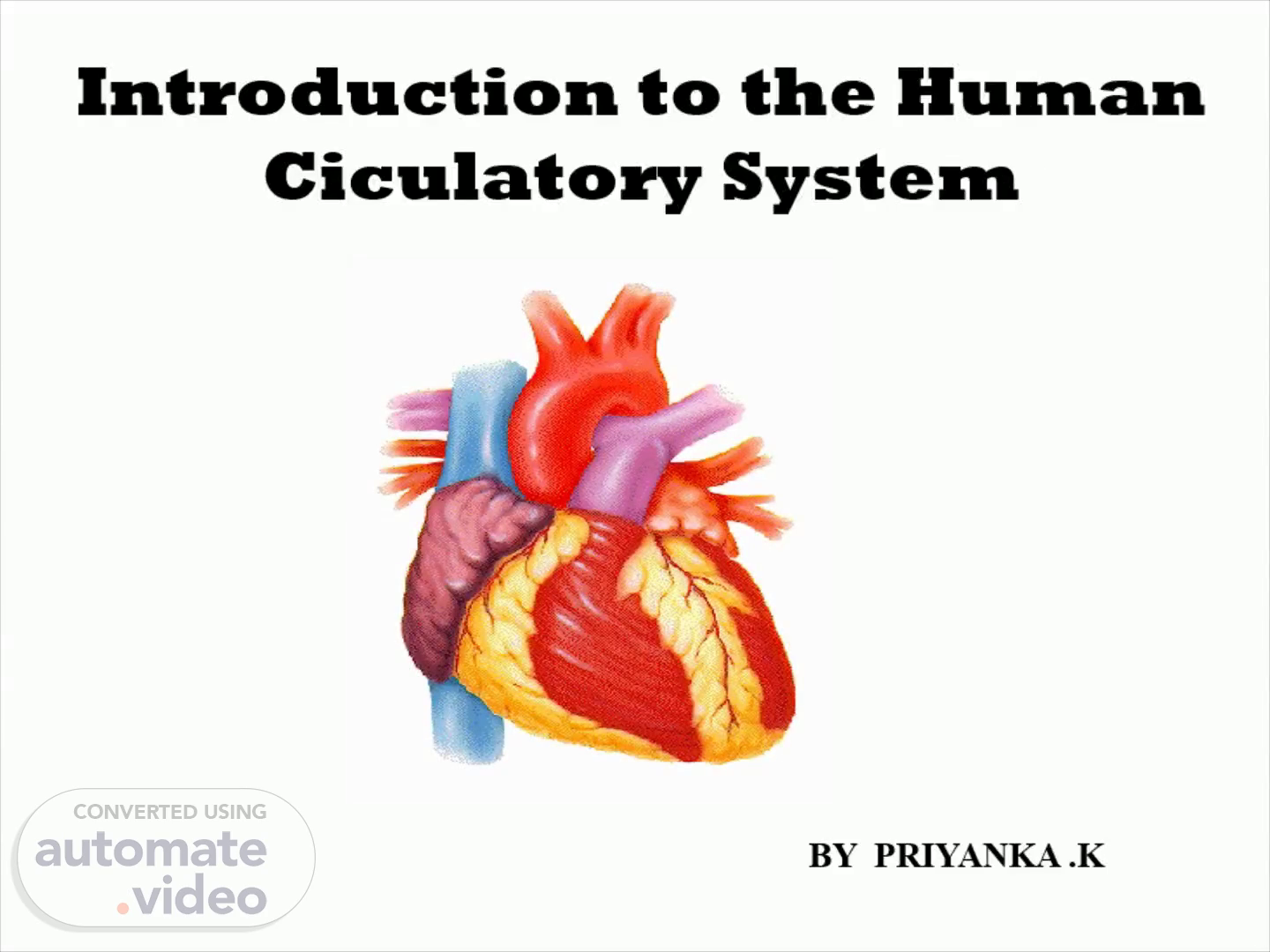
Page 1 (0s)
Introduction to the Human Ciculatory System. heart2.
Page 2 (8s)
INTRODUCTION. The cardiovascular system is transport system of body It comprises blood, heart and blood vessels. The system supplies nutrients to and remove waste products from various tissue of body. The conveying media is liquid in form of blood which flows in close tubular system..
Page 3 (24s)
COMPONENTS OF CARDIOVASCULAR SYSTEM. BLOOD HEART BLOOD VESSELS.
Page 4 (31s)
BLOOD. The Blood: Blood cells & Plasma Blood cells 1- Erythrocytes - Red Blood Cells 2- Leucocytes 3- Thrombocytes Plasma is fluid portion.
Page 5 (42s)
HEART. Heart is a four chambered, hollow muscular organ approximately the size of your fist Location: Superior surface of diaphragm Left of the midline Anterior to the vertebral column, posterior to the sternum.
Page 6 (56s)
HEART. Chapter 18, Cardiovascular System. 6. Figure 18.1.
Page 7 (1m 8s)
FUNCTIONS OF THE HEART. Generating blood pressure Routing blood Heart separates pulmonary and systemic circulations Ensuring one-way blood flow Heart valves ensure one-way flow Regulating blood supply Changes in contraction rate and force match blood delivery to changing metabolic needs.
Page 8 (1m 22s)
BLOOD VESSELS. Blood Vessels -A closed network of tubes These includes: Arteries Capillaries Veins.
Page 9 (1m 32s)
ARTERIES. Blood vessels that carry blood away from the heart are called arteries. They are the thickest blood vessels and they carry blood high in oxygen known as oxygenated blood (oxygen rich blood)..
Page 10 (1m 45s)
CAPILLARIES (5-8 micron). The smallest blood vessels are capillaries and they connect the arteries and veins. This is where the exchange of nutrients and gases occurs..
Page 11 (1m 57s)
VEINS. Blood vessels that carry blood back to the heart are called veins. They have one-way valves which prevent blood from flowing backwards. They carry blood that is high in carbon dioxide known as deoxygenated blood (oxygen poor blood)..
Page 12 (2m 12s)
CIRCULATION. Pulmonary circulation The flow of blood between the heart and lungs. Systemic circulation T he flow of blood between the heart and the cells of the body..
Page 13 (2m 31s)
FUNCTION OF CARDIOVASCULAR SYSTEM. Transport nutrients, hormones Remove waste products Gaseous exchange Immunity Blood vessels transport blood Carries oxygen and carbon dioxide Also carries nutrients and wastes Heart pumps blood through blood vessels.
Page 14 (2m 43s)
APPLIED. Diseases and Disorders BLOOD PRESSURE HAEMORRHAGE/STROKE ARTERIOSCLEROSIS ANEURYSM CORONARY ARTERY DISEASE (CAD) HEART ATTACK CONGESTIVE HEART FAILURE (CHF) ANEMIA, HEMOPHILIA, AND LEUKEMIA.
Page 15 (2m 54s)
Picture1. THANK YOU.